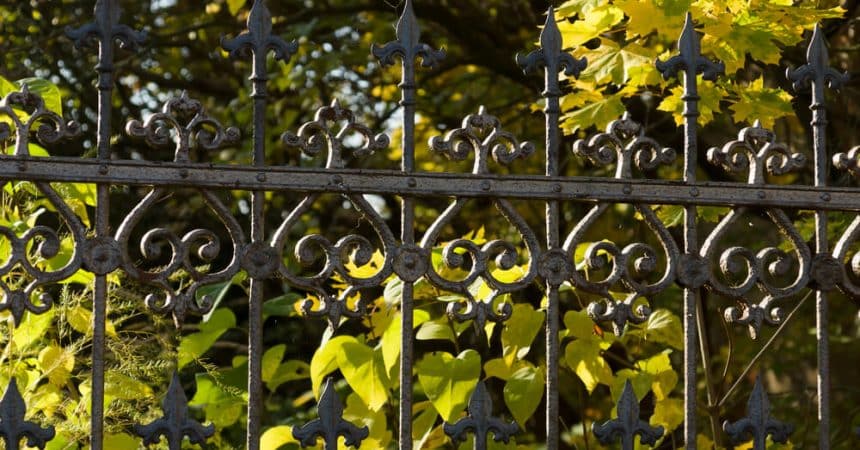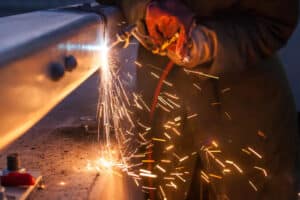 625 Celeste St Suite 504-E,
625 Celeste St Suite 504-E,New Orleans, LA 70130
 625 Celeste St Suite 504-E,
625 Celeste St Suite 504-E,
Iron structures are built to last, but they need regular care to stay strong, safe, and visually appealing. Without upkeep, weather, moisture, and daily wear can cause damage, leading to costly repairs. Whether it’s a railing, gate, or structural element, routine maintenance preserves both function and appearance. Big Easy Ironworks provides expert solutions to keep ironworks in top condition through inspections, cleaning, and timely repairs, ensuring lasting strength and durability.

Periodic maintenance stabilizes iron structures to be secure and good-looking. Rust prevention, early detection of problems, and applying protective paints ensure they remain longer without undergoing costly repairs.
Despite its inherent toughness, iron corrodes when exposed to weather. Barrier layers, such as powder coatings and weather-resistant coatings, help to prevent oxidation. Moisture generated through scratches and scratches on the surface of the paint can lead to rust. Regular checks allow small problems to be detected before they become large structural problems.
Regular checks help in the detection of rusting, cracking, or loose parts before they become a significant issue. Unstable railings or flaking paint can look minor, but they progress quickly. Keeping inspection records assists in monitoring long-term changes and ensures that requisite repairs are made promptly.
Addressing minor damage as it appears prevents costly repairs. It costs a lot less to repair a small area of rust or to tighten a loose connection than it does to replace part of an iron fence. Maintenance budgeting and scheduling routine check-ups avoid unexpected expenses.
Iron frames perform vital roles in residential, public, and business properties. Loose hardware, rusted connections, or compromised members may pose safety risks. Routine maintenance prevents these risks, keeping ironwork stable and secure for everyone’s safety.
Using protective coatings, minor damage repairs, and the best industry practices makes iron structures stronger. Load-carrying members, including bridges or stair railings, should be periodically inspected to keep them fully operational.
Annual inspection, or more often in public spaces, is essential to the upkeep of ironwork. It prevents problems from getting out of hand.
Cracks, dents, and deformities deteriorate iron frameworks. Minor injuries can undermine stability. Unusual noises, creaking, or excessive motion can portend more structural issues. Drones or cameras assist in accessing unreachable spaces for a better view.
Rust is a leading cause of iron deterioration. Discoloration, pitting, or peeling paint are early warning signs. Corrosion spreads quickly, especially in humid or coastal environments. Prompt action prevents further damage.
Paint, powder coatings, and sealants protect iron from environmental exposure. Regularly inspecting these layers helps determine when reapplication is needed, especially in extreme weather conditions.
Load-bearing components, joints, and fasteners should be checked for signs of wear. Reinforcing weakened sections early prevents long-term structural issues.
Standard care prevents dirt and moisture build-ups that lead to rust. Rinsing in mild soap, proper draining, and control of moisture make iron buildings tough and presentable.
Leaves, dust, and other debris trap moisture, leading to rust. Using soft brushes or microfiber cloths prevents scratches while keeping surfaces clean. Prompt cleaning after storms or heavy weather helps minimize damage.
Mild, biodegradable soaps mixed with water work best for cleaning irons. Harsh chemicals can damage protective coatings. Rinsing thoroughly and drying completely prevents water from pooling, reducing rust risk.
For iron structures with drainage systems, keeping gutters clean prevents water buildup that could lead to corrosion. Checking and clearing these systems seasonally reduces moisture exposure.
Controlling humidity and addressing leaks prevent accelerated corrosion. Proper ventilation in enclosed spaces also helps reduce moisture-related damage.
Rust can weaken iron structures if not addressed quickly. Removing it promptly and applying protective coatings helps prevent further damage and extends durability.
Mechanical methods like sanding or grinding remove surface rust, while chemical treatments dissolve oxidation. Applying rust inhibitors afterward prevents recurrence.
After rust is stripped away, coating treated areas with high-quality protective coatings like epoxy or polyurethane makes them stronger. Follow-up checks ensure coating efficacy.
Regular checking and the use of protective coatings appropriate to targeted environments reduce the risk of corrosion. Areas with coastal or high-humidity weather may need additional treatments.

Prompt repair keeps iron structures intact and secure. Repairing cracks, replacing broken components, and addressing weakened points helps avoid expensive failures.
Cracks affect both aesthetics and safety. Welding or epoxy injection restores structural integrity. Prioritizing repairs keeps ironwork secure and functional.
When repair isn’t possible, replacing compromised parts ensures reliability. Using high-quality materials prevents premature wear and extends the lifespan of the structure.
Bracing or additional supports strengthen stressed sections. Routine follow-ups confirm that reinforcements remain effective over time.
Protective coatings protect iron structures against moisture, rust, and the environment. Quality paint, anti-corrosion treatments, or galvanization lengthen their life and maintain them in their prime.
Oil-based or metal-based paint forms a water-resistant coating. Good preparation—cleaning, priming, and applying several coats—produces the best results. In coastal regions, repainting every few years enhances protection.
Specific treatments, like cathodic protection or vapor corrosion inhibitors (VCIs), offer extra protection against corrosion.
Galvanizing iron with a zinc coating provides durable corrosion protection over the long term and is, therefore, very suitable for new ironwork or extensive restoration jobs.
Regular monitoring helps keep iron structures strong and safe. Using modern tools and detailed records makes it easier to catch issues early and prevent costly repairs.
Maintaining detailed inspection records helps monitor wear patterns and identify emerging issues early.
Advanced tools, such as sensors and predictive software, provide real-time structural integrity updates. Implementing these technologies enhances maintenance accuracy.
Standardized documentation ensures consistent reporting and simplifies maintenance planning. Easy access to these records helps property owners and maintenance teams stay informed.
Iron structures are built to last, but only with the right care. The importance of regular maintenance for iron structures goes beyond aesthetics—it helps prevent rust, structural damage, and costly repairs. At Big Easy Ironworks, we take pride in helping our customers protect their ironwork with expert maintenance and repair solutions. Let us help keep your iron structures strong and beautiful for years—reach out to us today!
“Great job on the iron gates! I can’t believe they finished installing the iron gate and repairing our fence. A lot of my neighbors recommended Big Easy Iron Works and I can see why they trust them so much. Very professional workers came and the owner checked up from time to time. Great experience.”
– Vanessa Johnson“You have my respect for Big Easy Iron Works! Thank you for staying true to your word about quality service. They helped install our new iron fence and it exceeded my expectations to be honest. They explained everything they would be doing every day of the job. I really recommend them for those living in New Orleans. Hire them for your fencing needs.”
– Billy Anderson“I contacted Big Easy Iron Works because most of my neighbors recommended them to me. I am satisfied with the time that they took to finish the work repairs with my wood fence. The fences they placed turned out nice and they looked like they would last longer. I would also recommend them to my friends in New Orleans.”
– Shirley Oaks